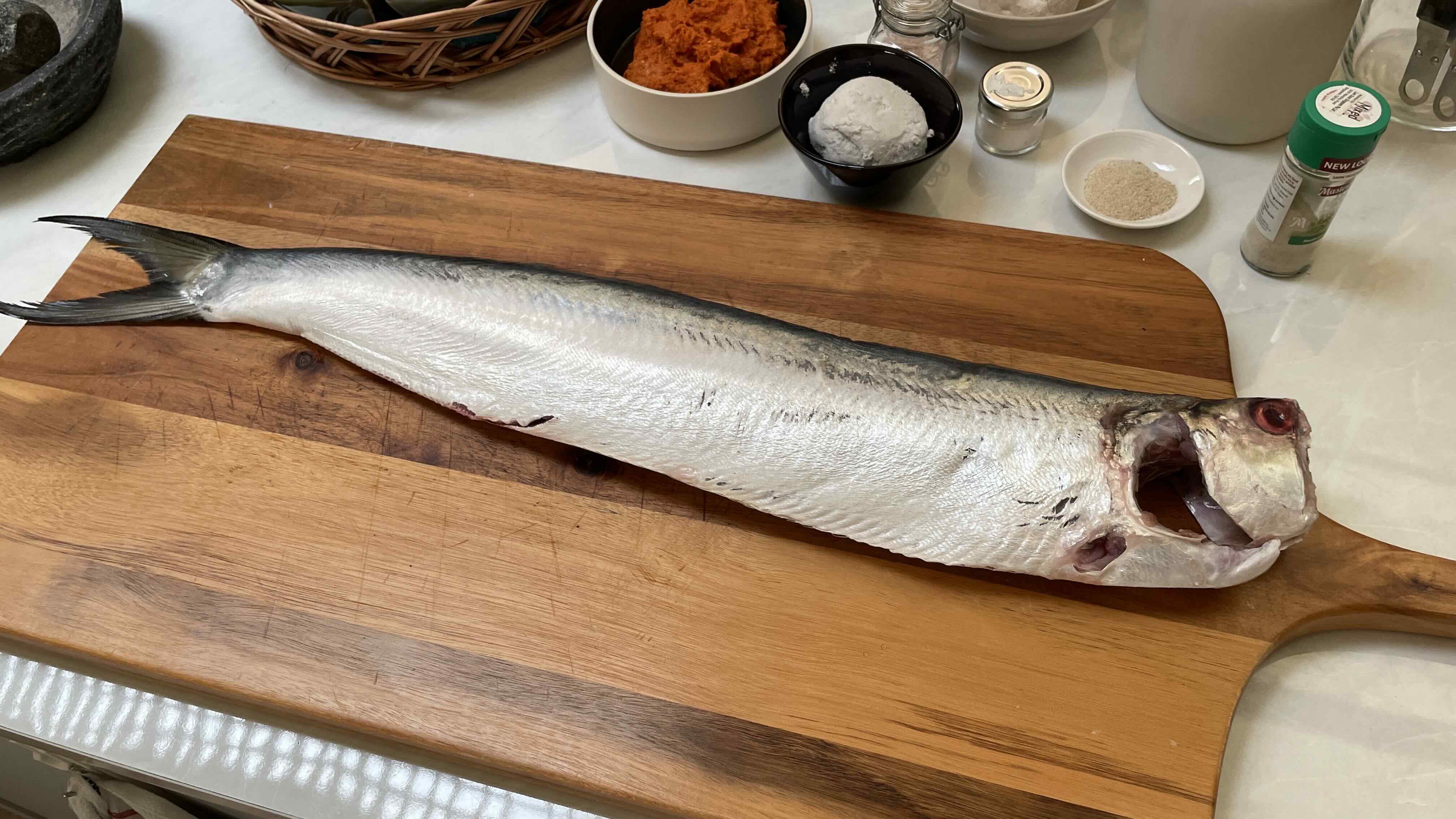The Scoop on Otak Blangah
Cracking fish bones and throwing fish patties – making otak blangah is a workout! How does this uncommon Peranakan dish taste in comparison to the all-familiar otak-otak? Tanya Pillay-Nair from the Peranakan Indian Association of Singapore revives this old recipe with her aunt.
Episode summary
You’ve most likely eaten otak-otak wrapped in banana leaves, but have you tried otak blangah – fishcake cooked in a clay pot? Blangah in Malay means “clay cooking pot”, hence the name of the dish.
Join Tanya Pillay-Nair and Aunty Danam as they cook up a storm to make this unique Peranakan dish. Learn more about the Chitty Melaka community and how food is prepared for Parachu (ancestral worship). Watch as Tanya and Aunty Danam show us how to prepare an ikan parang (wolf herring) for the fishcake. It involves a minor tug-of-war!



Recipes
This recipe for otak blangah came from Aunty Danam herself. Originally from the village of Kampung Chetti in Melaka, she learnt to cook after living with relatives in Singapore when she was 16 years old. The neneks (grandmothers) she learnt from were fastidious about their recipes and forbade the use of shortcuts, so traditional tools like the batu giling (grinding stone) were used to make the rempah (spice paste).
The recipe is published in Heritage Food of the Peranakan Indians (2023) by the Peranakan Indian (Chitty Melaka) Association Singapore. Included with the recipe are notes from a nenek, providing additional information about the dish and its preparation.
Otak blangah
For the fish paste:
500 g mackerel (or wolf herring)
2 tsp. anchovies seasoning powder (or white pepper)
2 tsp. sugar
1/2 tsp. salt
2 tbsp. sago/tapioca flour
For the coconut paste:
20 g roasted grated coconut
40 g finely grated white coconut
3 tbsp. thick coconut cream extracted from 125 g grated coconut
For the rempah (spice paste):
40 g dried red chillies
80 g shallots
80 g garlic
15 g turmeric
10 g blue ginger
10 g or 1 stalk lemongrass
15 g candlenuts
40 g red chillies
1 tsp. toasted belacan
Other ingredients:
500 ml thick coconut milk
1/2 tsp. salt
2 tsp. sugar
10g or a young turmeric leaf, sliced
10 g or 3 kaffir lime leaves, sliced
1. To make the fish paste, first fillet the mackerel. Then with a wet spoon, scrape the fish down to the bones and skin, depositing the flesh into a large bowl. Remove any bones.
2. Add anchovies seasoning powder or white pepper and sugar to the fish and mix well using a spoon.
3. To bind the fish to make a sticky paste, place the fish into a mortar and sprinkle the sago or tapioca flour. Create a salt water mixture, then dip the pestle into the salt solution and gently pound the fish. The saltwater from the pestle will further season the fish.
4. Using your hands, roll the fish paste into a ball and throw it into the mortar repeatedly for about 10 minutes to get a spongier consistency.
5. With wet hands, shape the fish paste (each about the size of a ping pong ball) into small round patties and set aside on a plate.
6. To make the coconut paste, dry-fry 20 g of fresh coconut in a pan until golden brown. Pound the roasted and freshly grated coconut together with the coconut cream to make a smooth paste. Set aside in a bowl.
7. To make the spice paste, soak the dried red chillies in hot water for 20 minutes, then drain and cut into 3 segments. Peel the shallots, garlic, turmeric and blue ginger, and finely slice them, together with the lemongrass. Pound the sliced aromatics together with the candlenuts, dried and fresh chillies and belacan into a fine paste.
8. Put the coconut and spice paste together with the coconut milk into a large clay pot and bring to a boil. Add the salt and sugar.
9. Add the finely sliced turmeric and kaffir lime leaves and cook for 2 minutes.
10. Gently slide in the fish paste patties, spreading them around the clay pot and poach until firm.
11. Lift out slowly, top with the gravy, and serve.
Related Podcast
Food of the Peranakan Indians
Tanya Pillay-Nair talks about ancestor worship in the Chetti Melaka culture, when the community serve the dishes that the ancestors enjoyed the most.
Related Article
Life Lessons in a Chetty Melaka Kitchen
Chantal Sajan recalls the legacy of her grandaunt during a time when Chetty Melaka families in Singapore served up Indian Peranakan dishes on tight budgets, using only the simplest of kitchen utensils.
Belacan: Caviar? Or Vile and Disgusting?
Notorious for its pungent aroma, fermented shrimp is a popular ingredient in many Malay, Eurasian and Peranakan dishes. Toffa Abdul Wahed dives into how it’s made, its reception as far back as the 1830s and the trade it inspired.
The Evolution of Straits-Born Cuisine
The Straits refers to the territories of the former Straits Settlements of Singapore, Melaka and Penang, as well as the islands that make up the Indonesian archipelago. The centuries of trade and colonisation in Southeast Asia have resulted in hybrid cuisines characteristic of the Straits-born communities – Eurasian, Chitti Melaka, Penang, Melaka and Indonesian Chinese.
Related Books
Peranakan Indian (Chitty Melaka) Association Singapore. Heritage Food of the Peranakan Indians: In a Chitty Melaka Kitchen. Peranakan Indian (Chitty Melaka) Association Singapore, 2023. (From National Library, Singapore, call no. RSING 641.595951 PER)
Pillay, Gerald Francis. The Chitty Melaka Story. Singapore: Pillay, Gerald Francis, 2018. (From National Library, Singapore, call no. RSING 305.89510595 PIL)

